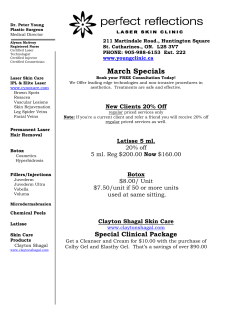
Liz Magic Laser ArtForum, April 2015
Harren, Natilee. “Liz Magic Laser,” ArtForum, April 2015. REVIEWS both documentary and primary claims are hampered by characteristics that cement the prints’ status as highly calculated images whose subjects are manipulated and posed in the artist’s studio, then processed into aesthetically precious serial works. If the artist’s paintings point elsewhere—whether to adobe architecture, the New Mexican desert, or some similar sense of the works’ material origins—these untitled photographs position themselves as supporting evidence of Dash’s studio artisanry. They also lent a sleek representational counterpoint to the otherwise abstract elements that graced the gallery’s expansive walls and reached toward its vaulted canopy. —Nicolas Linnert Liz Magic Laser VARIOUS SMALL FIRES Over the past five years, Liz Magic Laser has become known for bringing into critical view—through performance, video, and, increasingly, installation and sculpture—the aesthetic codes of public discourse, both rhetorical and choreographic. By illuminating the intellectual and emotional manipulation at play in political speech, TV newscasting, and corporate-focus groupthink, she proposes a model of institutional critique that treats the performance of public discourse as the immaterial cornerstone of American democracy-cum-oligarchy. The videos and sculptures featured in Laser’s second Los Angeles solo show advanced a poetic strain of this project, which mines historical theatrical and literary works whose themes resonate with the artist’s contemporary concerns. Earlier works sourced text from Rostand’s Cyrano de Bergerac (Absolute Event, 2013) and Sartre’s No Exit (In Camera, 2012); here, Dostoyevsky’s protoexistentialist novella Notes from the Underground provided content to rub against Given the cottage industry that has sprung up around ted-style public speaking, an adjacent side gallery fittingly evoked a training room. The video My Mind Is My Own, which shows a group voicecoaching session led by eleven-year-old actor Ella Maré, played continuously in the company of two mirrored glass sculptures bearing diagrams inspired by one of Laser’s long-standing inspirations, a nineteenthcentury manual of François Delsarte’s theories of oration. Inflective Medallion, a large circular mirror, bears a diagram modeled after one of Delsarte’s, which assigns certain affects to particular hand gestures. Laser’s version inverts Delsarte’s prioritization of inflections of wellbeing, happiness, contentment, and confidence to reflect Dostoyevsky’s drive toward “acute consciousness,” with its attendant pain and pathos. Of Gesture Relative to Its Modifying Apparatus materializes less successfully another of Delsarte’s diagrams; it resembles a Brancusi after having undergone phrenological analysis. There is a moment in My Mind Is My Own when the actors trace squares in the air with their tongues, a gesture that echoes another in The Thought Leader, when Ammerman sticks his tongue out at the spectators in defiance of intellectual oppression and implores the audience to do it back. However silly, the stuck-out tongue demands to be read seriously as both a stopping-up of speech and an accusatory gesture that turns the body inside out, a combination of Laser’s twin foci: speech and gesture. Next to the disarming tongues were noticeably recurring parentheses employed as both rhetorical and physical devices. Ammerman’s monologue concludes, “Perhaps I’m only imagining an audience in order to feel more dignified as I stand here in parentheses,” and indeed he stands on a rug screen-printed with the punctuation marks. (This prop, Parenthesis, 2015, also appeared in the gallery.) Meanwhile, Maré instructs her students to make their hands into the shape of parentheses in front of their mouths as they declaim, “My mind is my own.” Within the conventions of theatrical scriptwriting, parentheses are used to enclose stage directions meant explicitly for the actor, not to be spoken aloud. Laser’s parentheses build upon that logic, at once illuminating the invisible directives of mass-cultural rhetoric and detourning those hidden techniques into a newly visible critical platform. If Ammerman’s concluding sentence evokes a position critically outside of mainstream discourse that nevertheless adopts its formats and affects, Maré’s students form parentheses with their hands to amplify a mantra that would defend their intellects against unwelcome influence. It will be interesting to see what Laser does next with this second, apt poetic figure—a means of framing and drawing attention to the invisible dramaturgical forces that shape the aesthetics of the rhetoric that circulates, influences, and manipulates on a mass scale. —Natilee Harren TORONTO Douglas Coupland DANIEL FARIA GALLERY Liz Magic Laser, The Thought Leader, 2015, video, color, sound, 9 minutes 22 seconds. Alex Ammerman. 258 ARTFORUM the grain of the formulaic lecture style symptomatic of our neoliberal moment—the ted talk, in which innovations in technology, entertainment, and design are narrated as stories of personal transformation delivered in lean, highly seductive narrative arcs. In Laser’s video installation The Thought Leader (all works 2015), ten-year-old actor Alex Ammerman delivers Dostoyevsky’s derisive, anti-transformative ideas as a ted-esque talk, one that is received awkwardly by his small audience. The cognitive dissonance of the earnest, prepubescent orator delivering Dostoyevsky’s dark judgments opens up a chasm between the talk’s style and its content that enables us to consider them simultaneously. You have to hand it to Douglas Coupland. The Vancouver-based novelist, screenwriter, and lecturer has for decades now been the go-to source for pop-culture prognostication—his 1991 bildungsroman, Generation X: Tales for an Accelerated Culture, would serve to define the era. Coupland’s widely varying interests are driven by the parallel forces of rampant consumerism and collective dislocation in a digitally oversaturated world. Whether he’s writing about Marshall McLuhan, collaborating with curator Hans Ulrich Obrist, or moonlighting as a designer for a clothing line marketed to millennials, Coupland has a knack for taking the contemporary pulse and recording its fluctuations with a healthy measure of wit and skepticism.
© Copyright 2025









